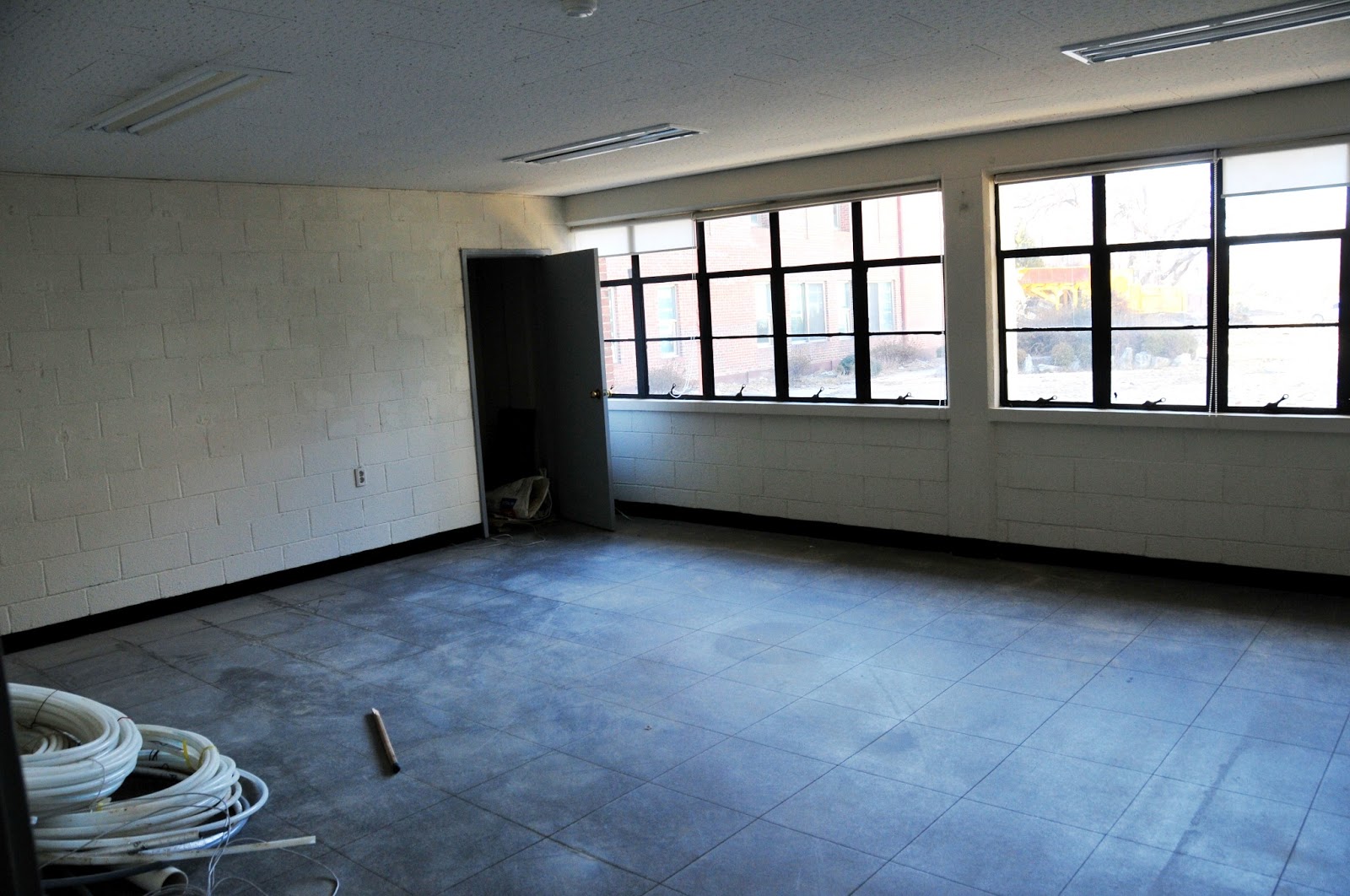As a young adult in his early 20's, I lived there two years, as a teacher at Korea Christian Academy (KCA), where I started my teaching career. There I taught East Asian History, Social Studies, Elementary Science(!), and was the Athletic Director(!!) and the Women's Volleyball coach(!!!).
[KCA is now TCIS, or Taejeon Christian International School; same school, same mission, claiming the same heritage. See http://www.tcis.or.kr/]
I arrived at KCA with a Master in East Asian History in 1979. When I left two years later, after teaching a course in Christian Theology, in the room (I mean, holy ground) pictured just below, I headed off to the first of two theological grad schools.
This room is holy ground for me. I was reading C. S. Lewis, Frederick Buechner, and William James at the time, and it became clear from this course that the theological classroom was my future!
KCA is my wife's (Grace Boyer, who grew up in a missionary family in Korea) former school, too. A couple of days ago, 26 January 2013, we both headed down for a great afternoon at both the new campus and the old campus of KCA-TCIS. A memorable afternoon.
We were met by the Assistant Head Ryan Roberts and Alumni Relations officer Ms. Eun Joo Jung at the TCIS campus in Daejeon's Techno Valley. After a great lunch, our tour began (BTW, there are more of such pictures here: https://www.facebook.com/
Some of the schools that graduates attend:
For TCIS/KCA alums, this is the old scoreboard from the old campus:
A Saturday afternoon of basketball games.
The men's team stretching pre-game.

After our tour of the new campus, we headed over to the old campus, now taken over by the adjacent Hannam University. It was begun as Korea Christian Academy by The Korea Mission of the Presbyterian Church, USA in the 1950s. By the time I got there in 1979, there were about 100 students, K-12. Most were missionary kids (MK's), and many of their parents lived nearby on "Baptist" and "Presbyterian" compounds. A dormitory housed MK's and business kids.
KCA became TCIS in the 1990s, I believe. The school still plays inter-school sports with the American Army Base high schools from Seoul, Taegu and Busan, as well as Seoul Foreign and Seoul International Schools. Until last August, the following pictures depicted the site of TCIS. There's quite a contrast in the facilities, and do forgive this walk down my memory lane. By this point, I suspect only KCA/TCIS-related folks will be reading: (smile)
Much of the area is under reconstruction by Hannam University. On its website, it maps the major buildings here, which we surmise to mean that Hannam will renovate or preserve the buildings. But now, it's mostly a construction mess.
I'll return to words at the very bottom, with some concluding thoughts and reflections.
Once again: Holy Ground. This is THE classroom where I got saved, FROM a future teaching East Asian History, TO a future in the academic study and teaching of religion/theology. The picture just after that shows the outside of the same room.
Why this post? Whenever I "consider Korea," KCA is the lens through which I see this country. There I learned most of the Korean I know, studied there a year of Chinese characters, and started learning how to do this thing called "teaching." I use all three activities on a daily basis here at Ewha.
KCA/TCIS was so formative in my life, and in so many other lives I know ... a crucial, intense time of life-shaping and -changing. It is my "road less traveled" that has "made all the difference." Without it, I would have had different major milestones marking my life since I was 25: marriage, daughter, schools, career. No New York City, no Mars Hill College, no Ewha Womans University.
I am sad the old site of KCA is so changed. When I lived there, I walked through rice and strawberry fields to get to the school. Small houses had drying peppers out front. Now, it's all high-rise and business, and one loses one's orientation quickly. The old KCA site is difficult to find for the visitor.
Maybe there are many alums or former teachers with similar stories as mine! Our sojourn at the school was a clarifying process: We come to know, at a relatively young age, that which we should do! How fortunate to be able to say that!
Thanks for reading.
Till next post.
Marc











































